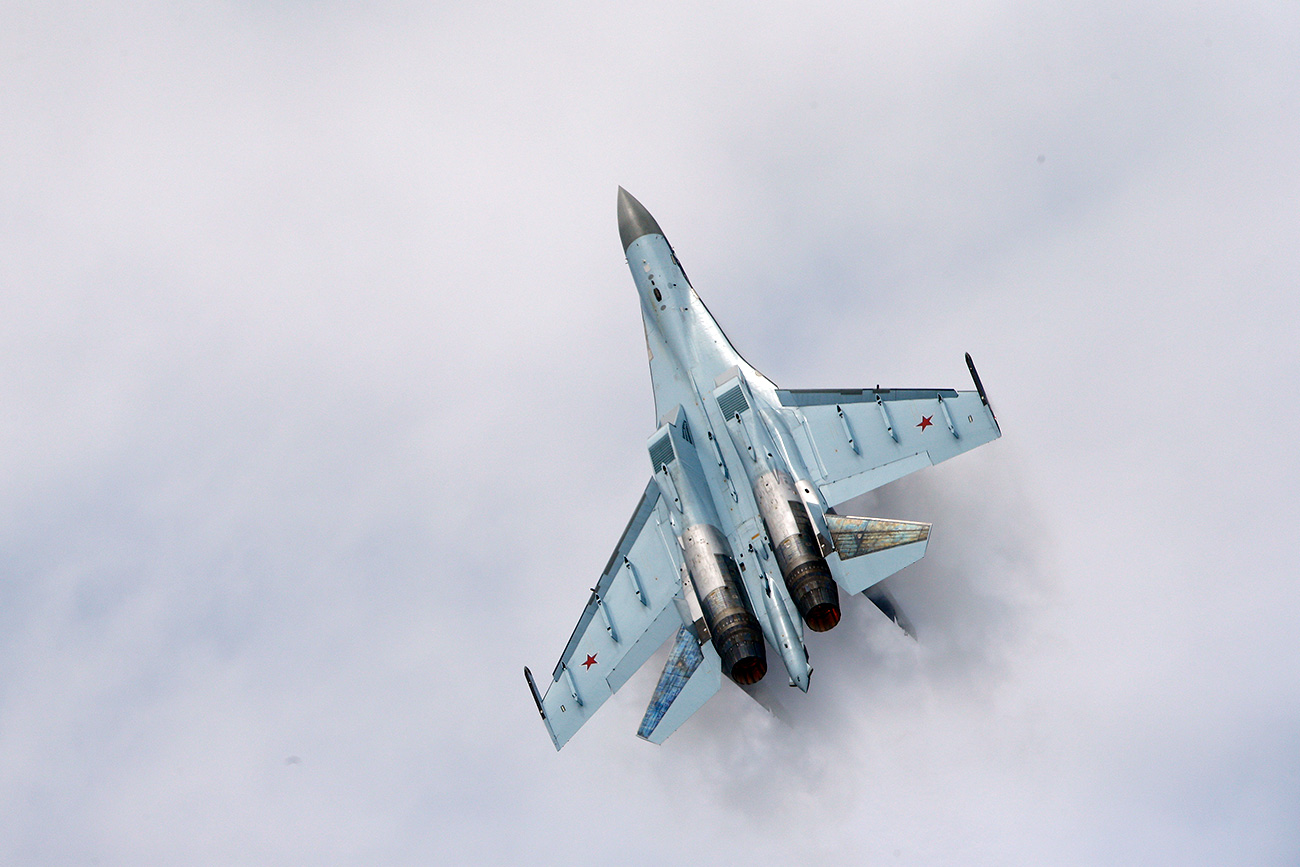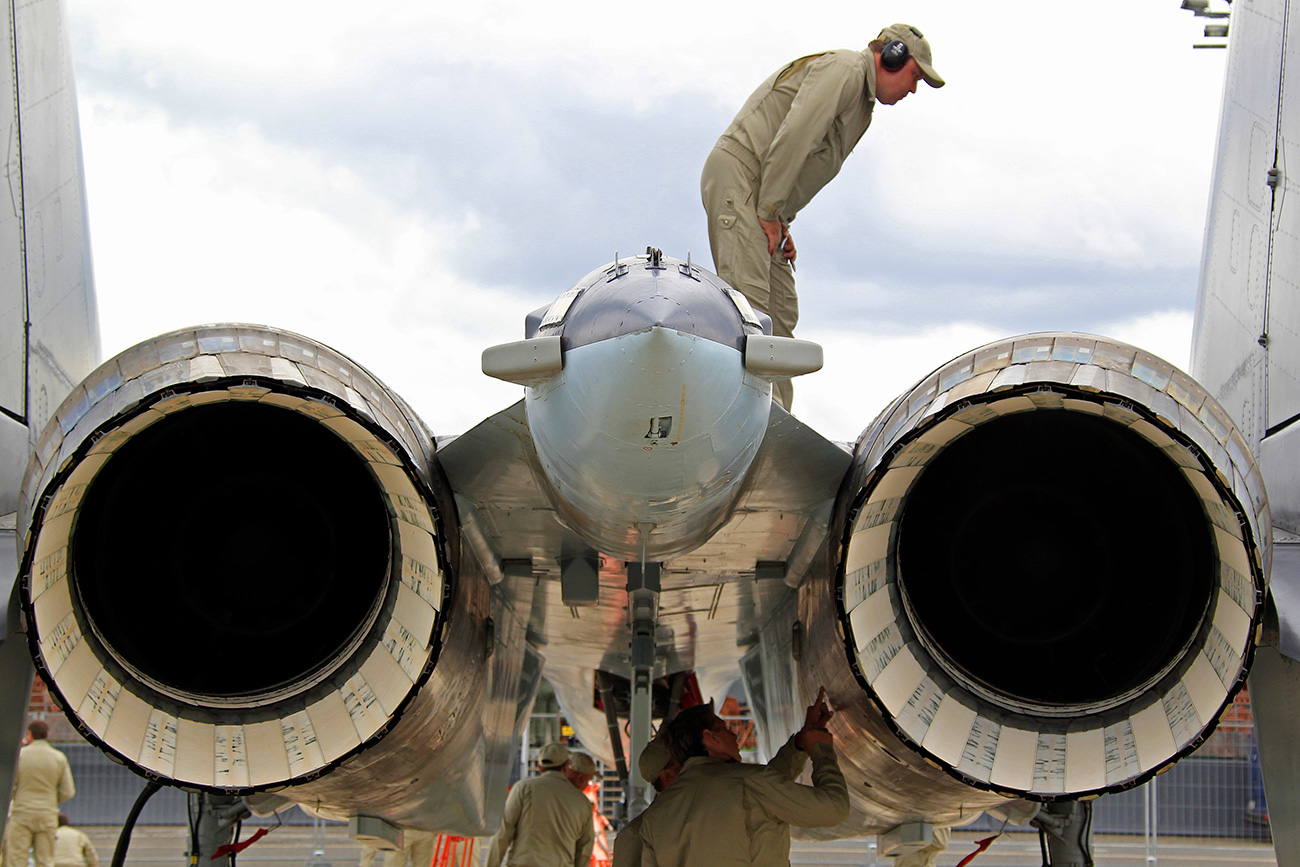What the fifth generation fighter will inherit from the Su-35

A Sukhoi Su-35 fighter aircraft takes part in a flying display, during the 50th Paris Air Show, at the Le Bourget airport near Paris.
ReutersJust recently in the West it was considered Russia's answer to America's F-22 Raptor fifth generation fighter. However, today the Su-35 has become the last step in the evolution of one of the best fighters of the 20th century, the Su-27.
Or it’s the first step in the creation of a completely new fifth generation T-50 combat system, also called PAK FA.
A transitional model
Externally, the Su-35 is basically a complete copy (except for the fuselage and engine) of the future Russian fifth generation fighter. It also costs at least three times less. This was one of the reasons why the Russian Defense Ministry decided to delay the launch of the PAK FA.
The Su-35 has a digital cabin. Just like the T-50, it does not contain equivalent devices with the usual arrows. Instead, there are two large color liquid crystal displays. Like on an ordinary TV, they reflect all the information that the pilot needs in picture-in-picture format," explained Professor Vadim Kozyulin from the Academy of Military Sciences.
 Engineers check specials vectored thrust jet engines of a Sukhoi Su-35 fighter after a flying display. / Photo: Reuters
Engineers check specials vectored thrust jet engines of a Sukhoi Su-35 fighter after a flying display. / Photo: Reuters
Also, the hydrodynamic control actuators from the power system are replaced with electric ones and the constructors say that this not only saves room and weight, but also helps introduce a parallel, remote guidance of the machine.
"In practice this means that the pilot's role becomes less conspicuous. That is, the computer decides at which speed and in which regime the machine will find its target and at which moment it will allow the pilot to use the weapons. Also, the fighter will perform a part of the complex piloting maneuvers, such as flying at low altitudes over the terrain, by itself," added Kozyulin.
The electronics will make sure that the pilot uses the weapons in a safe manner for the machine or does not have the plane go off in an uncontrollable spin, Kozyulin noted.
Moreover, the fighter contains an advanced radar system with the Irbis phased array antenna, which today possesses unique characteristics for detecting targets at great distances.
"In terms of characteristics, the radar is similar to the one in the F-22. The Irbis can detect an approaching target 350-400 km away. At such a distance the fighter can see an aircraft carrier, at 150-200 km a railroad bridge, at 100-120 km a motorboat and at 60-70 km operative-tactical missile systems or groups of armored vehicles and tanks, and it can strike them all," Kozyulin summed up.
The Su-35 also has the new Russian AL-41F-1S aviation engine, which gives the machine not only great speed and maneuverability, but also the possibility to hold many weapons.
In particular, the Su-35 can fly with eight tons of high-precision bombs and missiles.
The Su-35S has 12 external suspension hitches for holding high-precision missiles and air bombs. There are two wing end hitches for containers with electronic warfare systems. The fighter is equipped with an entire arsenal of modern high-precision missiles and air bombs.
What the Su-35 lacks to become a fifth generation plane
In the words of Deputy Defense Minister Yuri Borisov, the testing of a more advanced engine for the T-50, in comparison with the Su-35, is about to end.
 A Sukhoi Su-35 multirole fighter takes off at the Hmeymim airbase. / Photo: Valery Sharifulin/TASS
A Sukhoi Su-35 multirole fighter takes off at the Hmeymim airbase. / Photo: Valery Sharifulin/TASS
It will have to guarantee the machine the main prerequisite for a fifth generation fighter: The possibility to perform a supersonic flight without afterburning. Modern fighters can use the afterburning regime only for a limited amount of time. For the T-50 it will be a constant, working regime.
Read more: 5 crucial questions about Russia's T-50 fifth generation jet fighter
If using any of Russia Beyond's content, partly or in full, always provide an active hyperlink to the original material.
Subscribe
to our newsletter!
Get the week's best stories straight to your inbox